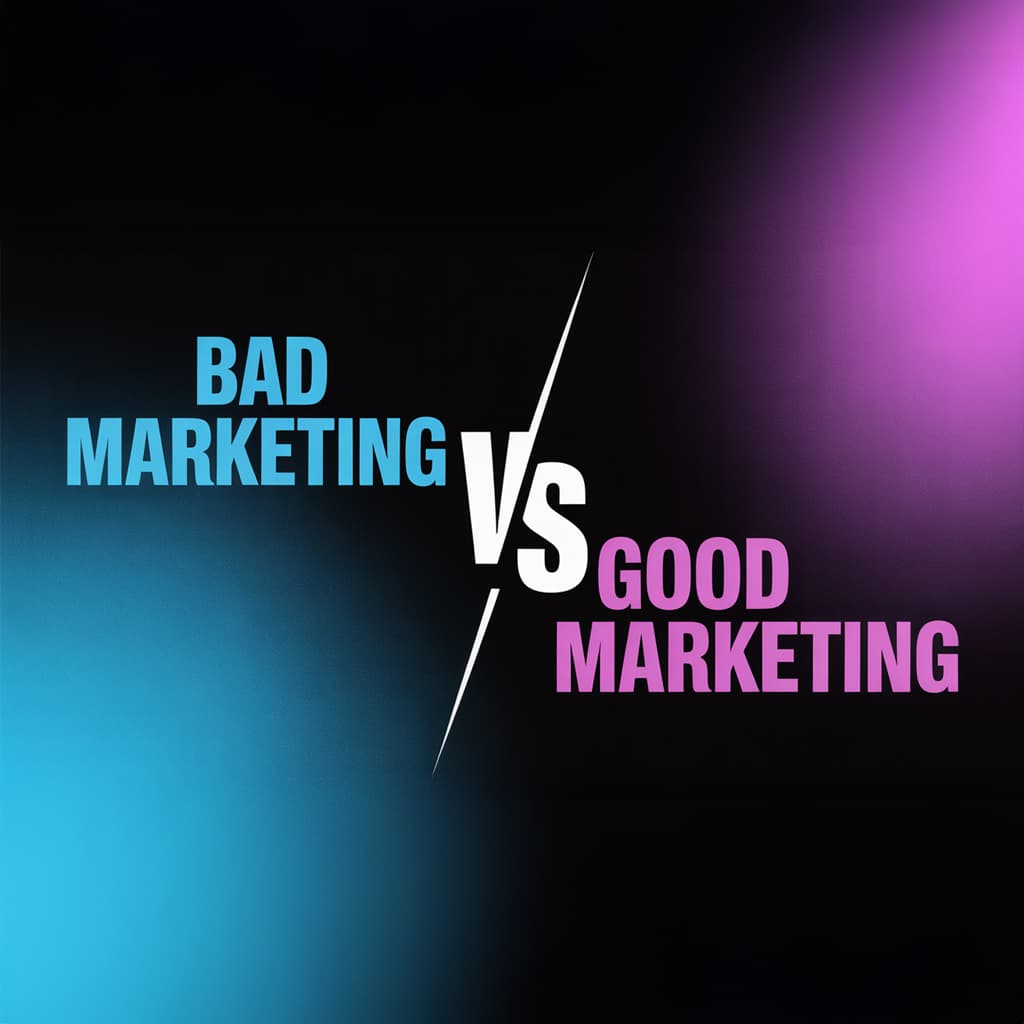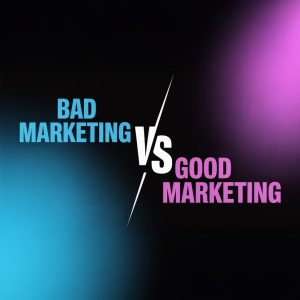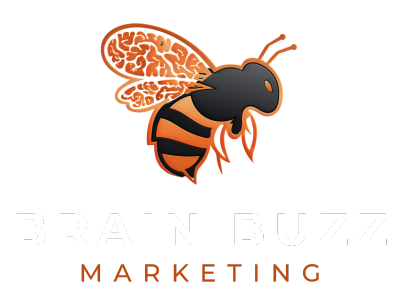Key Takeaways
- Solution-based marketing emphasizes understanding customer problems rather than just product features, creating stronger connections and driving success.
- Effective marketing transitions from a product-focused approach to a problem-focused strategy by addressing customer pain points first.
- Engaging customers with their specific challenges leads to higher satisfaction, loyalty, and long-term profitability.
- Companies like Slack, Zappos, and Apple showcase the power of focusing on customer problems and providing tailored solutions to foster trust and engagement.
- Implementing problem-focused marketing requires deep customer understanding, personalized experiences, and a commitment to education over mere promotion.
- Success is measured through customer-centric metrics that reflect long-term relationships and brand advocacy rather than just immediate sales.
Overview
There’s a marketing philosophy that’s been quietly revolutionizing how the most successful companies connect with their customers. It challenges everything we’ve been taught about selling products and services, and it’s captured in this simple but profound framework:
Bad Marketing:
- Here’s my product
- Here’s what it does
- Here’s what’s so good about it
Good Marketing:
- Here’s your problem
- Here’s the benefit of solving it
- Here’s why what you’ve tried has failed
And by the way, here’s a product that will help you solve it.
This isn’t just clever wordplay—it represents a fundamental shift from product-focused to problem-focused marketing that’s driving billions in revenue for companies that understand its power. While most businesses continue to lead with features, specifications, and product benefits, the companies winning in today’s marketplace have discovered something far more effective: starting with the customer’s problem.
The statistics tell a compelling story. Research shows that 73% of consumers believe positive customer experiences influence their future purchase decisions. Meanwhile, fully engaged customers represent a 23% higher share in growth, revenue, and profitability compared to average customers. These aren’t marginal improvements—they’re game-changing advantages that separate market leaders from the competition.
Yet despite this evidence, the majority of marketing content found on websites and in campaigns remains stubbornly product-focused. Companies continue to celebrate features, tout specifications, and hope that customers will somehow connect the dots between what they’re selling and what problems it solves. This approach might have worked in simpler times, but in today’s crowded, commoditized marketplace where customers can find virtually any product online, it’s a recipe for invisibility.
The companies that are thriving have made a crucial discovery: customers don’t care what you can do until you’ve engaged with their problem. They’re not interested in your product’s capabilities until you’ve demonstrated that you understand their pain points, challenges, and desired outcomes. This blog post will explore why problem-focused marketing creates deeper connections, drives higher engagement, and delivers better ROI than traditional product-focused approaches—and how you can transform your own marketing strategy to harness this power.
The Fundamental Difference: Features vs. Problems
To understand why problem-focused marketing is so much more effective, we need to examine what each approach actually entails and how they impact customer perception and behavior.
The Product-Focused Trap
Product-focused marketing places all emphasis on the products or services being sold. This approach centers on factors like price, selection, product usefulness, availability, and innovation as the primary drivers of the brand message. The strategy is straightforward: celebrate the features of a product and hope that those features will bring customers through the door or to the website.
This methodology treats benefits to the consumer as implied knowledge—it assumes customers will automatically understand how product features translate into personal value. A software company might lead with “Our platform includes advanced analytics, real-time reporting, and seamless integrations.” A fitness equipment manufacturer might emphasize “Commercial-grade construction, 50+ workout programs, and space-saving design.” While these features might be impressive, they require customers to do the mental work of connecting capabilities to their specific needs and problems.
The product-focused approach can be effective in very specific circumstances, particularly when the target consumer is actively searching for particular features and has deep knowledge about the product category. However, this represents a tiny fraction of the total addressable market. When the product selection in a marketplace becomes crowded—which describes virtually every industry today—feature-focused campaigns struggle to break through the noise and drive meaningful results.
The fundamental flaw in product-focused marketing is that it starts with the wrong assumption: that customers care about what you’ve built. In reality, customers are primarily concerned with their own challenges, goals, and desired outcomes. They’re not shopping for features; they’re shopping for solutions to problems that are keeping them awake at night.
The Problem-Focused Revolution
Customer-focused marketing takes a completely different approach by placing all emphasis on the target customer rather than the product. This strategy seeks to develop genuine relationships with customers by demonstrating understanding of their needs, desires, and concerns. The goal isn’t to showcase product capabilities but to delight customers with an experience that sets the company apart through deep empathy and problem-solving focus.
As one marketing expert puts it, “The primary goal of customer-focused marketing is to become the best in ‘wowing’ a customer—the emphasis isn’t on what they are buying, but rather on how they are treated while they do so.”
Problem-focused marketing bypasses the services and products themselves and hones in on the person who will be using them. It recognizes that products can be niche-specific and while price remains a factor, it becomes less important when customers feel truly understood and supported.
The most effective problem-focused content follows a three-step framework that completely inverts the traditional sales process:
- Talk about the problems they have – Start by identifying and articulating the specific challenges your target audience faces. This isn’t about generic pain points but about the real, concrete problems that brought them to seek a solution in the first place.
- Walk them through the solution, step by step – Provide genuine value by explaining how these problems can be solved, often giving away substantial free advice and education. This demonstrates expertise while building trust.
- Talk about the things that could fix those problems – Only after establishing problem understanding and solution knowledge do you introduce your product as one potential path forward.
This approach works because it mirrors how customers actually think and make decisions. When someone has a problem, they don’t immediately start evaluating product features. They first want to understand their problem better, explore potential solutions, and build confidence that a solution exists. Problem-focused marketing meets customers exactly where they are in this journey, creating natural alignment and trust that product-focused approaches simply cannot match.
The Psychology Behind Problem-Focused Marketing
Understanding why problem-focused marketing works requires diving into the psychology of how customers actually make purchasing decisions and what drives their attention and engagement.
The most critical insight is that customers at the top of the marketing funnel—those just beginning their buyer’s journey—simply don’t care about product capabilities until their problems have been acknowledged and understood. This isn’t a matter of preference; it’s how human psychology works. When we’re experiencing a problem or challenge, our attention is naturally focused on understanding and resolving that issue, not on evaluating potential solutions.
Consider someone experiencing frequent website crashes for their small business. Their immediate concern isn’t comparing hosting features or server specifications. They’re worried about lost revenue, frustrated customers, and their professional reputation. A hosting company that leads with “99.9% uptime, SSD storage, and 24/7 support” is speaking a different language than what this customer is thinking. But a company that starts with “Is your website costing you customers every time it goes down?” immediately captures attention because it mirrors the customer’s internal dialogue.
This psychological principle explains why product-focused content fails with larger audiences. As marketing expert John Aikin notes, “Product-focused content is not beneficial to your larger audience, the people at the top of the funnel. They don’t care what you can do because you haven’t engaged their problem. If you can’t show how you can solve their problem, they don’t care what the product can do.”
The buyer’s journey research supports this understanding. Modern customers are more self-educated than ever before, engaging with significantly more content and conducting extensive research before making purchasing decisions. They’re connecting with others through professional networks, asking questions in online communities, and seeking referrals as part of their evaluation process. This means they’re spending considerable time in the problem-exploration and solution-education phases before they’re ready to evaluate specific products.
Problem-focused marketing works because it provides value during these crucial early stages. Instead of trying to rush customers toward a purchase decision, it meets them where they are and helps them better understand their challenges and potential solutions. This approach builds trust and positions the company as a knowledgeable partner rather than just another vendor pushing products.
The educational component is particularly powerful. When companies provide genuine value through problem-focused content—explaining not just what problems exist but how they can be solved—they demonstrate expertise and build credibility. Customers begin to think, “These people really understand my situation and know how to fix it.” This creates a natural progression where customers want to learn more about the company’s solutions because they’ve already established trust and competence.
There’s also a psychological principle at work around reciprocity and relationship building. When a company provides valuable insights and education without immediately asking for anything in return, it creates a sense of obligation and goodwill. Customers appreciate companies that help them understand their problems better and provide actionable advice, even if that advice doesn’t immediately lead to a sale.
This is why the most effective problem-focused marketing often includes substantial free advice and education. Companies might explain step-by-step how to solve problems manually, recommend tools and resources, or provide frameworks and methodologies—all before mentioning their own products. This approach works because it demonstrates genuine care for customer success rather than just sales outcomes, creating the foundation for long-term relationships and customer loyalty.
Real-World Success Stories: Companies Getting It Right
The most compelling evidence for problem-focused marketing comes from examining companies that have successfully implemented this approach and the remarkable results they’ve achieved. These organizations span different industries and business models, but they share a common commitment to understanding and solving customer problems first.
Technology Companies Leading the Way
Slack: Building Through Customer Feedback
Slack’s journey from startup to billion-dollar company provides one of the clearest examples of problem-focused marketing in action. Since launching in 2013, Slack has continuously used customer feedback to create a better product based on customer needs rather than leading with technical features.
The company took an unusual approach during its early development, spending seven months intensely focused on receiving and incorporating user feedback before making any major product decisions. Instead of building features they thought would be impressive, they listened to what problems users were actually experiencing with team communication and collaboration.
This problem-first approach led Slack to develop an easy-to-use interface that allows individuals to communicate and stay organized—addressing the real pain points of workplace communication rather than trying to compete on technical specifications. The result was remarkable: Slack achieved a $623 million ROI in 2020.
But Slack’s problem-focused approach extends beyond product development into their marketing strategy. Rather than leading with features like “real-time messaging” or “file sharing capabilities,” Slack’s marketing focuses on workplace communication challenges: teams struggling to stay aligned, information getting lost in email chains, and the difficulty of maintaining context across multiple projects. By asking customers to share their experiences and featuring them in case studies, Slack has created brand advocates who fuel organic word-of-mouth marketing.
Microsoft: Relationship-Building Through Understanding
Microsoft’s transformation into a customer-centric organization demonstrates how even large, established companies can successfully shift to problem-focused marketing. The company’s newest relationship-building strategy enables each customer to receive a personalized and streamlined experience across all company channels.
Microsoft recognized a crucial insight: customers are more self-educated than ever before, engaging with more content and conducting extensive research to make informed buying decisions. This includes connecting with others through LinkedIn, asking questions in professional communities, and obtaining referrals as part of their evaluation process.
Rather than responding to this trend by pushing more product information, Microsoft’s inside sales team uses these same resources to optimize every customer interaction. For instance, the Inside Sales team uses LinkedIn Sales Navigator to obtain important insights about leads, including their role, industry, and company focus, allowing them to better tailor conversations around specific business challenges rather than generic product capabilities.
As Microsoft’s Senior Director of Digital Sales explains, the relationship shouldn’t end when a contract is signed. The focus remains on ongoing engagement: “You can follow them, comment on their articles, like their posts, and share content that might be useful to them. It’s all about engagement.” This approach treats customers as partners in solving ongoing business challenges rather than one-time purchasers of software products.
Retail and E-commerce Excellence
Zappos: Service as the Ultimate Problem-Solver
Zappos has built a $2+ billion annual revenue business selling shoes online without investing in traditional marketing—a feat that seems impossible until you understand their problem-focused approach. Instead of competing on product selection or pricing, Zappos identified that online shoe shopping creates specific customer problems: uncertainty about fit, concerns about quality, and anxiety about returns.
Zappos addressed these problems directly by providing services that eliminate customer concerns: free shipping both ways, a 365-day return policy, overnight shipping upgrades, and outstanding customer service. These aren’t just nice-to-have features; they’re targeted solutions to the specific problems that prevent people from buying shoes online.
The company views money spent on customer service not as an expense but as a strategic investment that improves the brand and differentiates it from competitors. This problem-solving focus has created such strong customer loyalty that Zappos generates massive revenue through repeat purchases and referrals rather than traditional advertising.
Zappos also implements a customer-first mindset throughout their website, providing a dedicated customer support menu with a visible phone number at all times and friendly calls to action that make promotions more enticing. By consistently meeting customer needs and resolving concerns, the brand has built sustainable relationships through various digital touchpoints.
Apple: The Service Experience Revolution
While Apple is often celebrated for innovative technology, much of the company’s success actually comes from its reputation as an outstanding service provider focused on solving customer problems. Apple’s obsession with customer service might seem surprising given their premium pricing, but it reflects a deep understanding of what customers actually need when purchasing and using technology products.
Apple’s decision to build brick-and-mortar stores in a predominantly digital era demonstrates their commitment to controlling the customer service experience. Customers who buy Apple products know exactly where to go for support and product care assistance, eliminating the frustration of dealing with third-party service providers who may not understand their specific needs.
The company’s rigorous staff training focuses on a customer-first approach through their “Five Steps of Service”:
- Approach the customer with a warm and personalized welcome
- Politely probe the customer to understand their needs
- Present a solution that the customer can take home today
- Listen to the customer and resolve any issues they have
- End with an affectionate farewell and an invitation to return
Notably, none of these steps instructs staff to meet sales targets or push specific products. Instead, employees are trained to ensure customer needs are met and concerns are resolved. This problem-focused approach has led to Apple becoming synonymous with exceptional service, creating customers who show absolute loyalty and become vocal advocates for the brand.
Cross-Industry Problem-Solving Champions
McDonald’s: Listening and Adapting
McDonald’s provides an excellent example of how traditional companies can embrace problem-focused marketing through active listening and adaptation. Rather than simply promoting menu items and prices, McDonald’s has systematically identified and addressed evolving customer needs through social media listening and online surveys.
The company uses social media monitoring to track digital conversations and measure overall demand, identifying customer problems like the desire for healthier options, longer operating hours, and more flexible meal timing. This listening approach led to major innovations like All Day Breakfast, which directly addressed customer frustration with rigid meal timing restrictions.
McDonald’s has also utilized technology to streamline customer experience through kiosk ordering stations and partnerships with delivery services like UberEats. These innovations weren’t driven by internal technology goals but by understanding customer problems: long wait times, order accuracy issues, and the desire for convenient food access.
Patagonia: Values Alignment as Problem-Solving
Patagonia demonstrates how problem-focused marketing can extend beyond immediate product needs to address broader customer values and concerns. With over thirty stores across the US and approximately $800 million in annual revenue, Patagonia has successfully blended company culture with customer values.
The brand’s “buy less, buy quality” approach addresses customer concerns about environmental impact and overconsumption. Their “Worn Wear” initiative takes this further by asking customers to trade in old clothes for store credit, with items either sold as part of the “Worn Wear” collection or used to create new gear in their “Recrafted” product line.
This approach works because it addresses real customer problems: environmental guilt about consumption, desire for durable products, and the challenge of disposing of old gear responsibly. By connecting customers with the company’s environmental mission, Patagonia has built exceptional customer loyalty and advocacy that extends far beyond their products.
TD Bank: Convenience as Competitive Advantage
TD Bank’s approach demonstrates how identifying and solving simple customer problems can create significant competitive advantages. The bank labels itself as “America’s Most Convenient Bank” and backs this up with a customer-centric approach that addresses a fundamental problem: traditional banking hours that don’t match customer schedules.
By staying open seven days a week until 8 p.m. while most competitors close at 4 p.m., TD Bank solves a real customer problem. As CEO Ed Clark explains, customers eventually wonder why they continue banking with competitors “when TD offers beautiful stores with staff that fondly greet walk-ins and even offer biscuits to their dogs.”
The bank’s customer acquisition strategy also focuses on problem-solving, sending bankers to small businesses on Sundays to highlight that TD branches are open while customers’ existing banks are closed. This approach succeeds because it addresses a genuine business problem: the need for banking services outside traditional hours.
These success stories share common elements: deep customer understanding, focus on solving real problems rather than promoting features, and long-term relationship building over short-term sales optimization. The companies that excel at problem-focused marketing don’t just sell products; they become trusted partners in helping customers achieve their goals and overcome their challenges.
How to Transform Your Marketing Approach
Understanding the power of problem-focused marketing is one thing; implementing it successfully is another. The transformation requires both strategic thinking and practical execution across multiple areas of your marketing operations.
Assessment: Where Do You Stand Today?
Before making changes, it’s essential to honestly evaluate your current marketing approach. Marketing experts have developed a comprehensive framework for assessing whether your business is truly customer-focused or still trapped in product-focused thinking.
Consider these critical questions about your current marketing strategy:
Customer Understanding: Who is your target audience, and how well do you really know them? Customer-focused marketing requires deep understanding that goes beyond basic demographics to include pain points, motivations, and decision-making processes.
Message Focus: Are your marketing messages addressing customer pain points, or are they primarily highlighting product features? Problem-focused marketing speaks directly to the challenges customers want solutions for, while product-focused marketing assumes customers will connect features to benefits.
Feedback Integration: How do you gather and incorporate customer feedback into your marketing strategy? Customer-focused approaches involve continuous feedback loops to adapt and improve based on customer input, rather than making assumptions about what customers want.
Value Communication: Does your marketing emphasize the value your product or service provides to customers, or does it focus on specifications and capabilities? Problem-focused marketing communicates benefits and solutions rather than just features.
Content Personalization: How personalized is your marketing content? Customer-focused approaches tailor content to individual needs and preferences, creating more engaging and relevant experiences than one-size-fits-all messaging.
Customer Experience Priority: Do you prioritize customer experience throughout your marketing funnel? Problem-focused marketing ensures the customer journey is seamless, enjoyable, and user-friendly at every touchpoint.
Engagement Quality: Are you actively engaging with your audience through two-way communication, or is your marketing primarily one-directional broadcasting? Customer-focused marketing involves building relationships through genuine interaction and dialogue.
Issue Resolution: How do you handle customer complaints or concerns in your marketing communications? Problem-focused approaches address concerns proactively and demonstrate commitment to customer satisfaction.
Success Metrics: What metrics do you prioritize in your marketing analytics? Customer-focused marketing goes beyond sales numbers to include customer-centric metrics like satisfaction, retention, and lifetime value.
Implementation: The Four Pillars of Transformation
Successfully transitioning to problem-focused marketing requires systematic changes across four key areas:
1. Understand Your Customers Deeply
The foundation of problem-focused marketing is genuine customer understanding that goes far beyond surface-level demographics. This requires both quantitative and qualitative research to uncover the real problems, motivations, and decision-making processes of your target audience.
Effective customer research involves direct conversations through interviews and surveys, behavioral analysis through website and social media analytics, and competitive intelligence to understand how customers currently solve their problems. The goal is to develop detailed buyer personas that capture not just who your customers are, but what keeps them awake at night and what success looks like from their perspective.
This research should be ongoing rather than a one-time project. Customer needs and problems evolve, and your understanding must evolve with them. Companies that excel at problem-focused marketing treat customer research as a continuous process that informs every marketing decision.
2. Customize the Experience
One-size-fits-all marketing is no longer effective in today’s personalized world. Problem-focused marketing requires creating customized experiences throughout each channel and touchpoint that speak to specific customer segments and their unique challenges.
Personalization goes beyond using someone’s name in an email. It means understanding where different customers are in their problem-solving journey and providing relevant content and solutions for their specific situation. A customer just discovering they have a problem needs different information than someone who’s already evaluated multiple solutions.
This customization should extend across all marketing channels: website content that adapts based on visitor behavior, email campaigns segmented by customer challenges and interests, social media content that addresses different audience segments, and sales conversations that focus on individual customer problems rather than generic product presentations.
3. Invest in the Right Technology
Problem-focused marketing requires technology infrastructure that enables personalized, responsive customer interactions. The right Customer Relationship Management (CRM) platform ensures you’re delivering messages when customers are ready to take action, rather than when it’s convenient for your marketing schedule.
Modern marketing technology should enable you to track customer behavior across multiple touchpoints, segment audiences based on problems and interests rather than just demographics, automate personalized content delivery based on customer actions and preferences, and measure engagement and satisfaction metrics beyond just conversion rates.
The technology should serve the customer experience, not drive it. The goal is to use technology to better understand and respond to customer needs, not to automate generic marketing messages more efficiently.
4. Focus on Education Over Promotion
The most effective problem-focused marketing provides genuine value through education and information sharing. This means creating content that helps customers understand their problems better and explore potential solutions, even when those solutions don’t immediately involve your products.
Educational marketing might include step-by-step guides for solving problems manually, frameworks for evaluating different solution approaches, industry insights and trend analysis that helps customers make better decisions, and honest comparisons of different solution options, including competitors.
This educational approach builds trust and positions your company as a knowledgeable partner rather than just another vendor. Customers appreciate companies that help them make informed decisions, even when that education doesn’t immediately lead to a sale.
Content Strategy Transformation
Implementing problem-focused marketing requires a fundamental shift in how you create and distribute content. Instead of starting with product features and benefits, successful content strategies begin with customer problems and work backward to solutions.
The most effective approach follows the three-step framework: first, identify and articulate specific customer problems in language that resonates with their experience. Second, provide valuable education about how these problems can be solved, often including free advice and step-by-step guidance. Finally, position your product or service as one potential solution, using language like “Or you can use our product to handle all of that for you.”
This approach works because it mirrors how customers actually think and make decisions. They start with problems, explore solutions, and then evaluate specific products or services. Content that follows this natural progression feels helpful rather than promotional, creating engagement and trust that traditional product-focused content cannot achieve.
Measuring Success: Beyond Traditional Metrics
The shift to problem-focused marketing requires a corresponding evolution in how you measure success and return on investment. Traditional marketing metrics like click-through rates, conversion percentages, and immediate sales numbers, while still important, don’t capture the full value of relationship-building and long-term customer development.
Customer-centric metrics provide a more complete picture of marketing effectiveness. Customer satisfaction scores and Net Promoter Scores indicate how well you’re solving customer problems and creating positive experiences. Customer lifetime value measures the long-term financial impact of relationship-building approaches. Retention rates and repeat purchase behavior demonstrate whether your problem-focused approach is creating lasting customer loyalty.
Brand advocacy and word-of-mouth impact represent some of the most valuable outcomes of problem-focused marketing, though they can be challenging to measure directly. Companies like Slack and Zappos have built substantial businesses primarily through customer referrals and organic growth, demonstrating the power of customers who become genuine advocates for problem-solving companies.
The key is to balance short-term performance indicators with long-term relationship metrics. Problem-focused marketing may not always produce immediate sales spikes, but it builds sustainable competitive advantages through customer loyalty, brand reputation, and market differentiation that compound over time.
Conclusion: The Future of Marketing is Customer-Centric
The marketing philosophy that distinguishes between bad and good marketing isn’t just a clever framework—it represents a fundamental shift toward customer-centricity that’s reshaping entire industries. Companies that continue to lead with product features and capabilities are increasingly finding themselves at a disadvantage against competitors who understand and address customer problems first.
The evidence is overwhelming: problem-focused marketing creates deeper customer relationships, drives higher engagement, and delivers superior long-term results. From Slack’s $623 million ROI built on customer feedback to Zappos’ $2+ billion revenue generated without traditional advertising, the companies winning in today’s marketplace have discovered that solving customer problems is the most effective path to business success.
The transformation isn’t always easy, requiring changes in mindset, strategy, and execution across multiple areas of marketing operations. But the companies that make this shift successfully don’t just improve their marketing results—they build sustainable competitive advantages that become increasingly valuable over time.
As you evaluate your own marketing approach, ask yourself: Are you starting with your products or your customers’ problems? Are you celebrating features or solving challenges? Are you building transactions or relationships? The answers to these questions will determine not just your marketing effectiveness, but your long-term business success in an increasingly customer-centric world.
The choice is clear: continue competing on features and capabilities in an increasingly crowded marketplace, or differentiate yourself by becoming the company that truly understands and solves customer problems. The companies that choose the latter aren’t just changing their marketing—they’re positioning themselves to lead their industries for years to come.
FAQs
A: Product-focused marketing emphasizes features, specifications, and capabilities of products, hoping customers will connect these to their needs. Problem-focused marketing starts by identifying and addressing customer problems first, then presents solutions. The key difference is that problem-focused marketing engages with customer pain points before introducing products, while product-focused marketing assumes customers already understand how features benefit them.
A: Product-focused marketing fails because customers at the top of the marketing funnel don’t care about product capabilities until their problems are acknowledged and understood. When people have problems, their attention is focused on understanding and resolving those issues, not evaluating product features. This approach only works for a small fraction of customers who are already knowledgeable about the product category and actively searching for specific features.
A: The three-step framework is: (1) Talk about the problems customers have – identify and articulate specific challenges your audience faces, Walk them through the solution, step by step – provide valuable education about how problems can be solved, often including free advice, and Talk about things that could fix those problems – only then introduce your product as one potential solution, using language like “Or you can use our product to handle all of that for you.”
A: Yes, several companies excel at this approach: Slack built a $623 million ROI by focusing on workplace communication problems rather than technical features. Zappos generates $2+ billion annually by solving online shoe shopping problems (fit uncertainty, return anxiety) through exceptional service policies. Apple’s success comes from solving customer service problems through their Five Steps of Service approach. McDonald’s uses social listening to identify and address customer problems like flexible meal timing, leading to innovations like All Day Breakfast.
A: Start with four key areas: Understand your customers deeply through research and direct conversations to identify real problems, Customize experiences for different customer segments and their specific challenges, Invest in technology that enables personalized, responsive interactions, and Focus on education over promotion by creating content that helps customers understand problems and solutions. Begin by auditing your current messaging to see if you’re addressing customer pain points or just highlighting product features.









